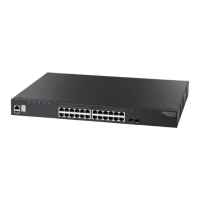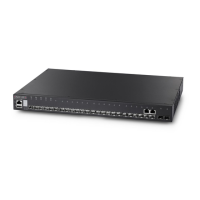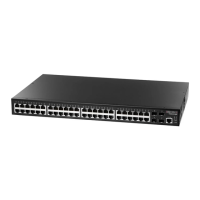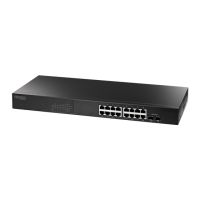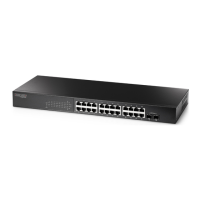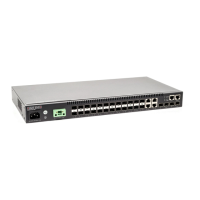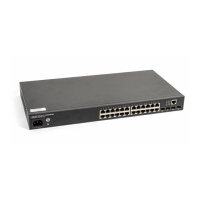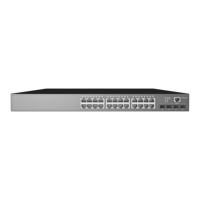Chapter 13
| Basic Administration Protocols
Ethernet Ring Protection Switching
– 471 –
■
Revertive/Non-revertive recovery
■
Forced Switch (FS) and Manual Switch (MS) commands for manually
blocking a particular ring port
■
Flush FDB (forwarding database) logic which reduces amount of flush FDB
operations in the ring
■
Support of multiple ERP instances on a single ring
Version 2 is backward compatible with Version 1. If version 2 is specified, the
inputs and commands are forwarded transparently. If set to version 1, MS and
FS operator commands are filtered, and the switch set to revertive mode.
The version number is automatically set to “1” when a ring node, supporting
only the functionalities of G.8032v1, exists on the same ring with other nodes
that support G.8032v2.
When ring nodes running G.8032v1 and G.8032v2 co-exist on a ring, the ring ID
of each node is configured as “1”.
In version 1, the MAC address 01-19-A7-00-00-01 is used for the node identifier.
The R-APS Def MAC parameter has no effect.
◆ MEG Level – The maintenance entity group (MEG) level which provides a
communication channel for ring automatic protection switching (R-APS)
information. (Range: 0-7)
This parameter is used to ensure that received R-APS PDUs are directed for this
ring. A unique level should be configured for each local ring if there are many R-
APS PDUs passing through this switch.
◆ Control VLAN – A dedicated VLAN used for sending and receiving E-APS
protocol messages. (Range: 1-4094)
Configure one control VLAN for each ERPS ring. First create the VLAN to be used
as the control VLAN (see “Configuring VLAN Groups” on page 166), add the ring
ports for the east and west interface as tagged members to this VLAN (see
“Adding Static Members to VLANs” on page 169), and then use this parameter
to add it to the ring.
The following restrictions are recommended to avoid creating a loop in the
network or other problems which may occur under some situations:
■
The Control VLAN must not be configured as a Layer 3 interface (with an IP
address), a dynamic VLAN (with GVRP enabled), nor as a private VLAN.
■
In addition, only ring ports may be added to the Control VLAN. No other
ports can be members of this VLAN.
■
Also, the ring ports of the Control VLAN must be tagged.
Once the ring has been activated, the configuration of the control VLAN cannot
be modified. Use the Admin Status parameter to stop the ERPS ring before
making any configuration changes to the control VLAN.
◆ Node State – Refer to the parameters for the Show page.
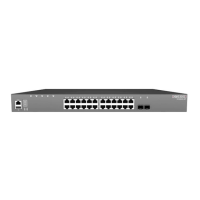
